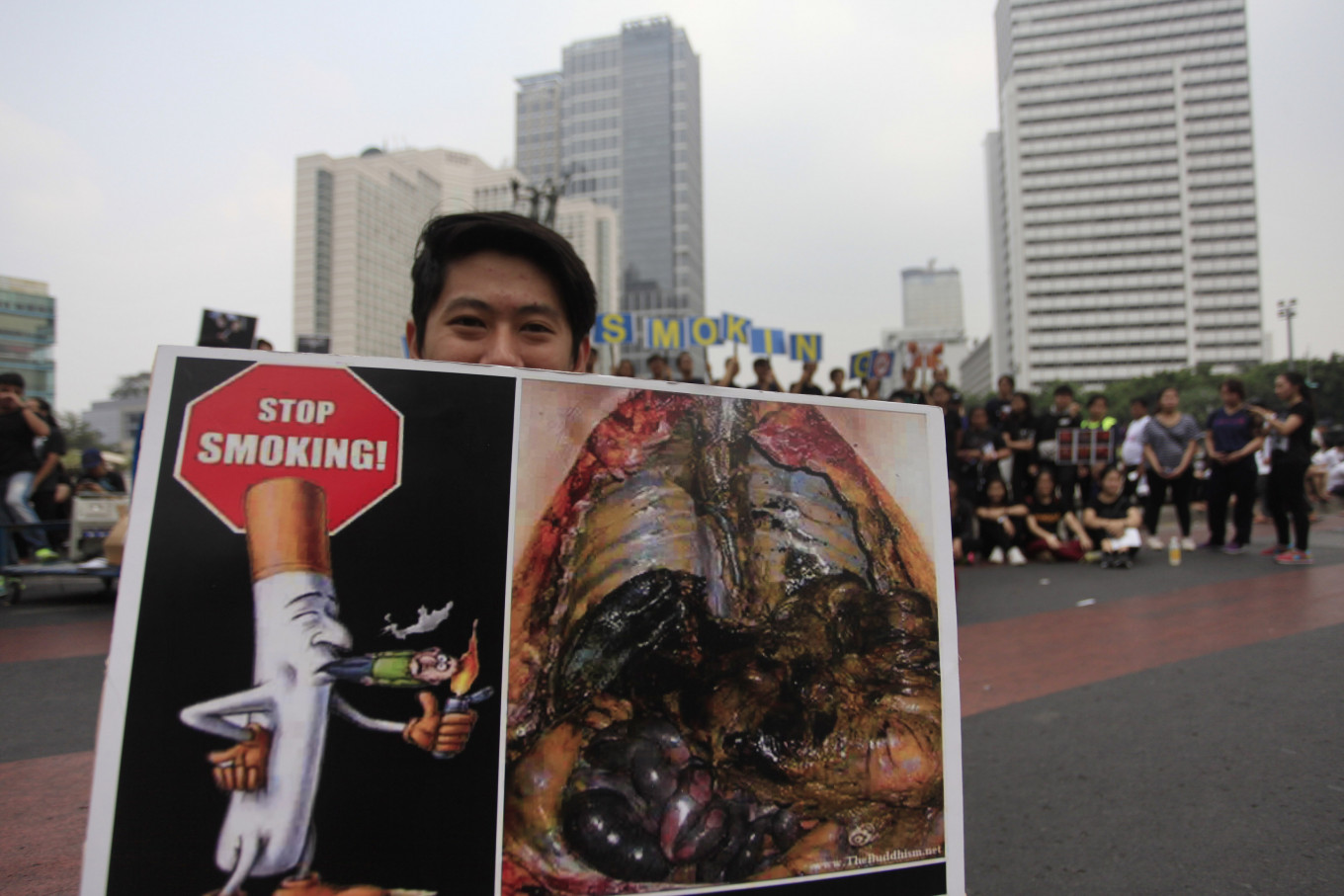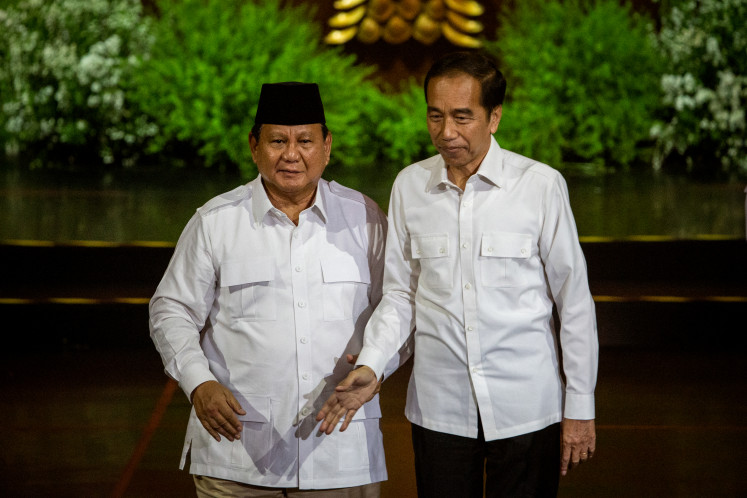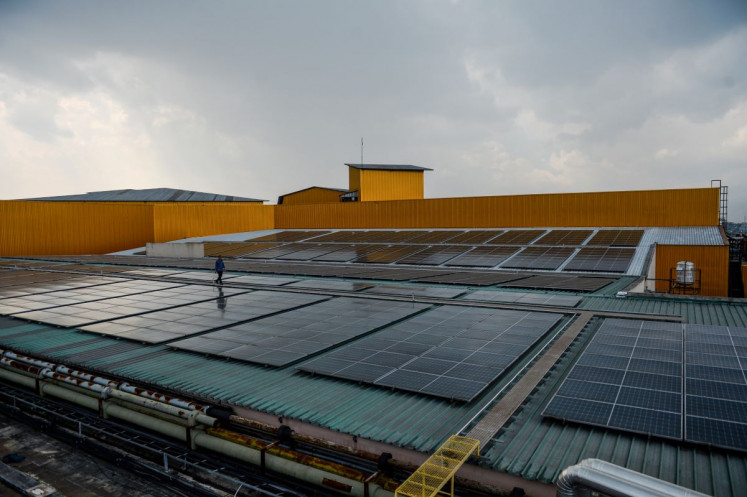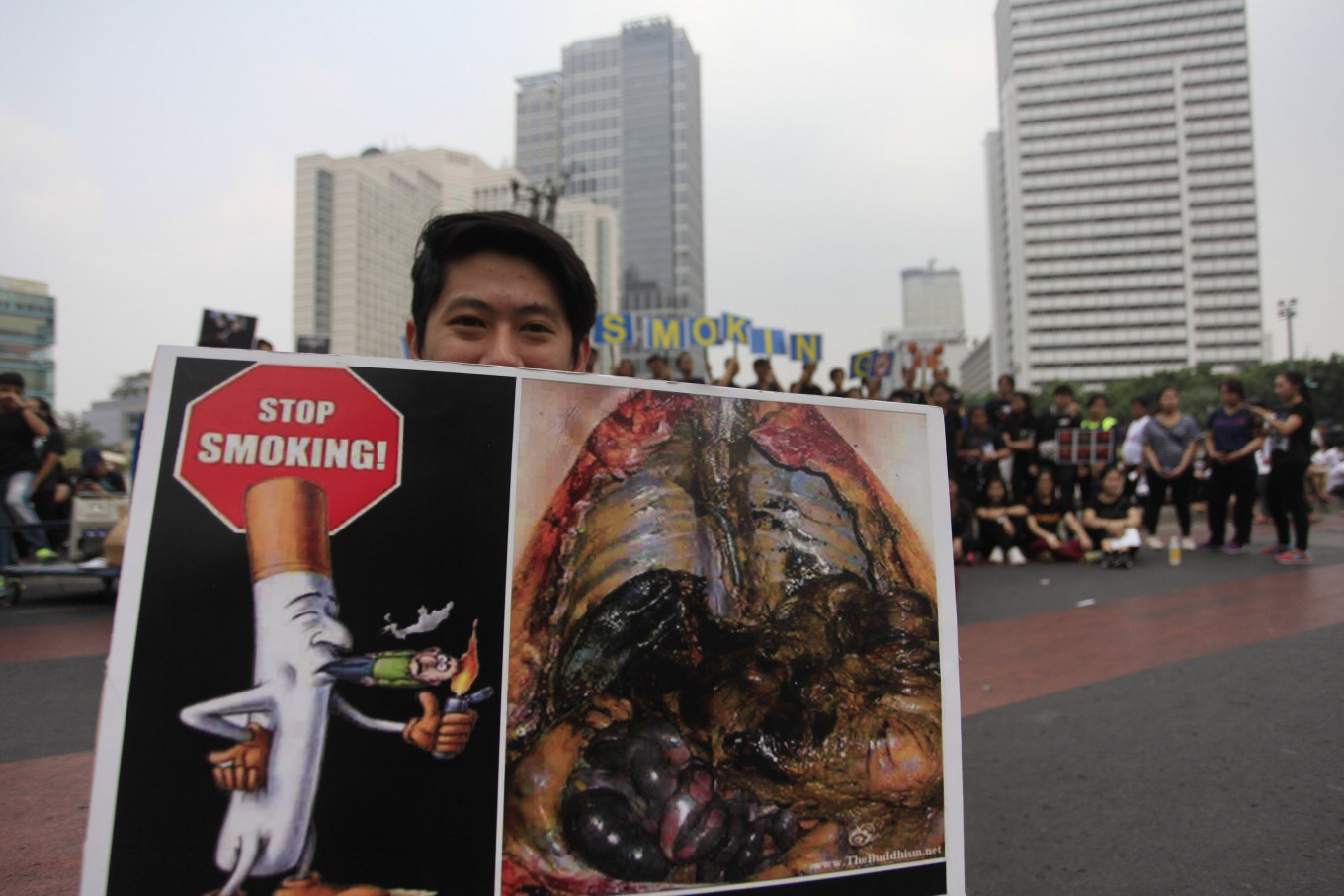Popular Reads
Top Results
Can't find what you're looking for?
View all search resultsPopular Reads
Top Results
Can't find what you're looking for?
View all search resultsStrengthen govt support to help smokers quit
Change text size
Gift Premium Articles
to Anyone
R
educing the prevalence of smoking is far from easy. Using excise taxes to reduce smoking rates is the go-to weapon with high expectations. However, it has not provided encouraging results, especially in Indonesia’s case.
Data from the World Health Organization highlights that Indonesia currently has the highest prevalence of smoking in the world for adult males. The figure continued to increase from 70 percent in 2010 to 76 percent in 2016. In addition, Basic Health Survey (Riskesdas) data from the Health Ministry shows that the prevalence of youth smokers soared to 8.8 percent in 2017, exceeding the government’s planned target of 5.4 percent.
A few local initiatives reflect the vital role of the commitment of leadership in tobacco control. In late September, the city of Bogor in West Java for the first time hosted the 2019 Asia Pacific Cities Alliance for Tobacco Control. As cited proudly by Mayor Bima Arya Sugiarto, Bogor was selected because of its strict regulations on tobacco consumption and circulation, including a 2009 bylaw on smoke-free areas, another bylaw and a mayor’s decree banning cigarette advertisements in outdoor spaces and also tobacco company-sponsored events.
To encourage more regional governments to follow suit, of course local attempts must be supported at the national level. Indonesia’s high smoking prevalence can be attributed to the lack of commitment to maximizing its use of excise instruments. Based on laws and regulations, the government can set an excise tariff of up to 57 percent of the selling price of retail cigarettes. However, the rate has stayed at around 40 percent.
Although the government has the capacity to increase the excise tariff, this has been seemingly hard to achieve. Additionally, in 2019, the government failed to increase its excise tariff on cigarettes despite the increasing smoking rate among both adults and children.
The urgency to reduce the prevalence of smoking in Indonesia cannot be ignored any longer. Statistics Indonesia (BPS) has stated that smoking was the second-largest contributor to poverty in Indonesia. Meanwhile, the Health Care and Social Security Agency (BPJS Kesehatan) claims that chronic illnesses such as heart disease, kidney failure, cancer and stroke, which are attributed to smoking, highlight the need for further national health insurance funding.
The rate of people attempting to quit smoking is insignificant. The WHO reported that up to 30.4 percent of smokers in Indonesia have tried to quit smoking, but only 9.5 percent have been successful, even despite the raised excise tariff.


















